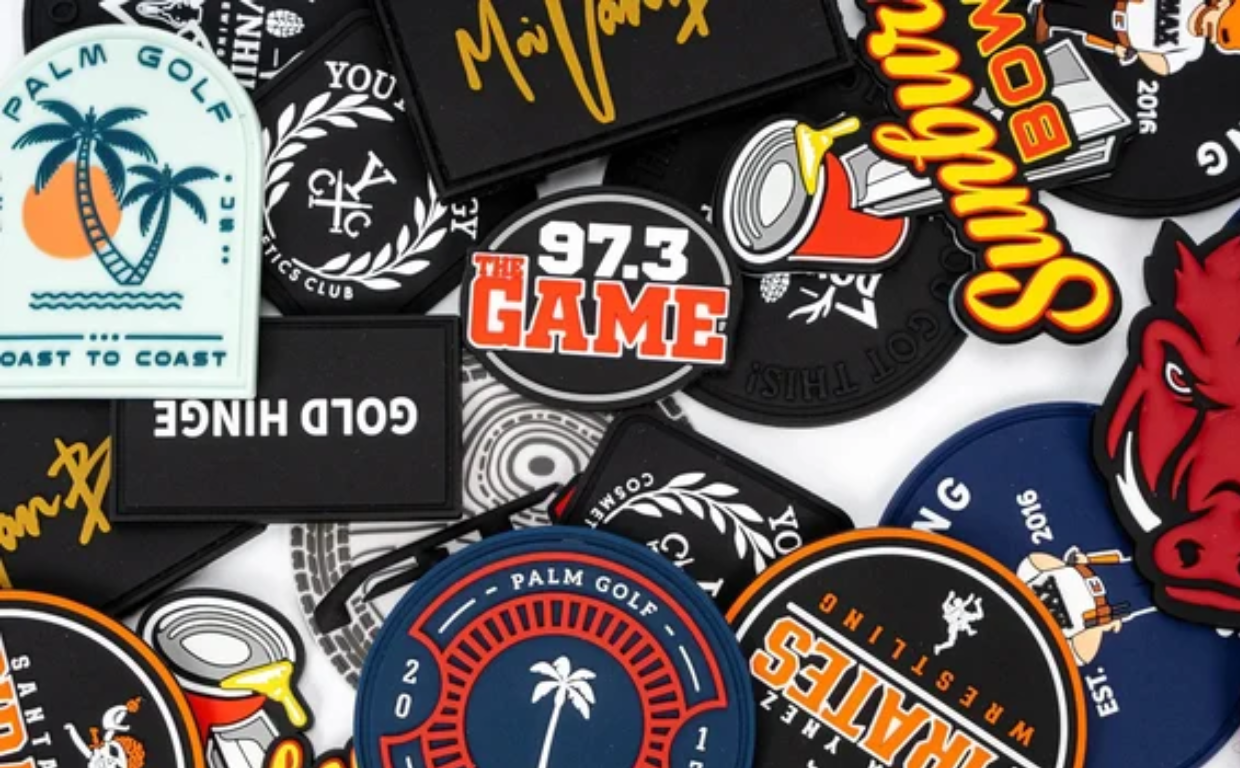Choosing the right material for your custom patches is essential for both style and function. PVC and rubber are often confused, but they offer distinct benefits. At Mahi Digitizing, we break down the key differences to help you pick the best option for your branding or apparel.
What Are PVC Patches?
PVC stands for polyvinyl chloride, a strong, flexible plastic commonly used in commercial-grade patches. PVC patches are molded into shape, allowing for bold, colorful designs with 2D or 3D effects.
They are known for their resistance to water, UV rays, and general wear—making them ideal for outdoor or tactical use.
The material holds its form even after heavy use, and colors rarely fade even with sun exposure.
They are often used on uniforms, backpacks, hats, and military or rescue gear for a clean, professional look.
At Mahi Digitizing, we specialize in custom PVC patches tailored for both durability and design precision.
What Are Rubber Patches?
Rubber patches are often made from silicone or synthetic rubber compounds. They are soft, elastic, and have a slightly matte or textured finish.
These patches are more flexible than PVC and tend to be used on fashion or accessory products that benefit from a soft, tactile design.
While rubber patches also provide water resistance, they may lose shape or color more quickly than PVC when exposed to extreme weather.
They work well for decorative branding, lifestyle products, or novelty items that emphasize comfort over rugged durability.
We offer rubber patches as a stylish alternative when softness and elasticity are key requirements.
Durability and Weather Resistance
Durability is often the deciding factor when choosing between these two materials. PVC patches outperform rubber when it comes to wear, pressure, and exposure to the elements.
They do not crack or fade easily and can handle extreme temperatures, sunlight, and moisture without degrading.
Rubber patches are softer but more sensitive to weathering. Over time, they may become brittle or discolored if not cared for properly.
For work uniforms, tactical gear, or outdoor branding, PVC remains the top choice.
However, for lightweight accessories or temporary items, rubber can still be a viable, budget-friendly option.
Key Differences at a Glance
Here’s a simple comparison of PVC and rubber patches based on major features:
- Material: PVC is a durable plastic; rubber is softer and more flexible.
- Texture: PVC offers smooth or glossy finishes; rubber has a matte or rubbery feel.
- Durability: PVC is more weather-resistant and long-lasting than rubber.
- Detailing: PVC allows intricate 3D designs; rubber offers simpler embossed effects.
- Applications: PVC suits tactical, outdoor, or commercial use; rubber fits lifestyle or fashion accessories.
At Mahi Digitizing, we help you weigh these options based on the product and purpose of your patch.
Which Looks More Premium?
Both materials can deliver a premium look, depending on how they’re used. PVC has a more polished, structured appearance, ideal for logos or uniforms that demand consistency.
Rubber patches, while softer, can offer a more organic, handcrafted appeal. They look great on streetwear, bags, or novelty gear.
If your brand leans toward performance and toughness, PVC adds sharpness and color clarity that stands out.
On the other hand, if your aesthetic is casual or textured, rubber may give you the soft-edge look you’re after.
We match each project to the style that elevates your brand identity without compromise.
Cost and Production Considerations
Cost can vary depending on the size, complexity, and quantity of patches ordered. Generally, PVC patches may cost slightly more upfront due to mold setup and detailing.
However, they offer better long-term value because of their resilience and color retention.
Rubber patches are easier to produce in smaller batches and may be more affordable for simple or limited-edition runs.
We offer competitive pricing for both types and guide you through the best fit based on budget and use case.
Bulk orders and reorders are especially cost-effective when you choose high-quality PVC patches.
When to Choose PVC Over Rubber (or Vice Versa)
Every application is different, so choosing the right material depends on how and where your patch will be used.
If you need weatherproof branding on tactical gear, uniforms, or heavy-use bags—PVC is the clear winner.
Rubber may be the better choice for promotional giveaways, fashion gear, or accessories that favor softness and comfort.
We evaluate each project carefully and provide design samples to help you visualize the final result before production.
That way, you always get the right patch material for your brand’s needs.
Get Expert Help from Mahi Digitizing
Whether you’re torn between PVC and rubber patches or already know what you want, Mahi Digitizing is here to assist.
We deliver durable, detail-rich custom patches tailored for your brand, budget, and intended use.
Our team offers free consultations, fast turnaround times, and complete support from design to delivery.
We make sure your patch not only looks great but performs exactly as needed in its environment.
Request a free quote or contact us today to get started with your custom patch project.

